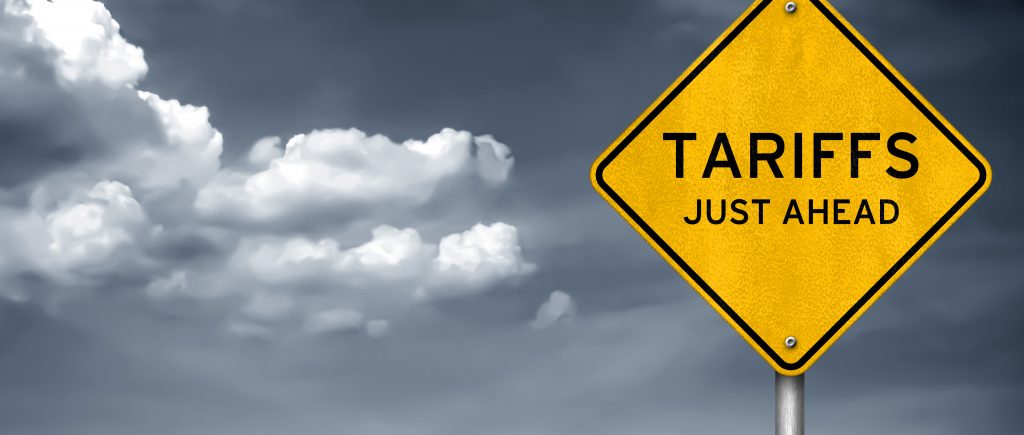As U.S. President Donald Trump prepares to unveil a transformative tariff regime today, April 2, 2025, at 4 p.m. Eastern Time, the global economic order teeters on the edge of upheaval. Billed as a bold bid to resurrect America’s manufacturing prowess, this announcement threatens to redraw the map of international trade, with Europe and Canada poised at the forefront of the fallout. The details remain elusive—ranging from a sweeping 20% levy on all imports to targeted duties on lumber, copper, pharmaceuticals, and microchips—but the immediacy of the policy’s rollout promises to send shockwaves through markets and capitals alike. With the world watching, the question looms: will global markets emerge from this storm unrecognizable, and how will two of America’s closest trading partners respond?
The interconnected global economy, built on the free flow of goods and components across borders, now faces a seismic disruption. Companies, blindsided by the White House’s abrupt timeline, have scant time to recalibrate supply chains or pricing strategies as duties take effect instantly. For the Federal Reserve, the stakes are equally high, tasked with decoding whether these tariffs will stoke inflation—potentially necessitating steeper interest rate hikes—or tip the U.S. into a recession marked by rising unemployment and economic stagnation. Timed to coincide with the close of U.S. cash trading, the announcement is set to ignite volatility in futures markets, gold, and currencies, with traders worldwide on edge.
Yesterday’s market movements hinted at the brewing tension. U.S. stocks clawed into positive territory, with the Dow up 100 points, yet the broader sentiment remained one of “extreme fear,” according to CNN’s Fear and Greed Index. In Europe, stock markets staged a tentative recovery, bolstered by core bonds as April’s EMU inflation data—up 0.6% month-over-month to 2.2% year-over-year—reinforced expectations of a final 25 basis-point rate cut by the European Central Bank (ECB) on April 17, lowering rates to 2.25%. German yields tested a 2.65% technical support level, while the yield curve bull flattened, signaling caution. Across the Atlantic, U.S. manufacturing data painted a grim picture: the ISM index slipped to 49, with new orders (45.2) and employment (44.7) contracting sharply and prices paid surging to 69.4—hardly a springboard for a manufacturing revival. Job openings held near 7.57 million, but Treasury yields dipped, reflecting a market holding its breath.
Europe, already grappling with a $235 billion goods deficit with the U.S. in 2024, stands on the precipice of a trade war. ECB President Christine Lagarde has sounded the alarm, warning that Trump’s tariffs will inflict a “negative impact” globally, with the severity hinging on their scope, duration, and the goods targeted. Speaking to Ireland’s Newstalk radio, she cautioned that such measures often boomerang, harming even those who impose them. The European Commission’s Olof Gill echoed this sentiment, predicting “pain” on both sides of the Atlantic and pleading for negotiations to avert disaster. In France, government spokesperson Sophie Primas speculated on tariffs as high as 20% to 25%, foreseeing “significant economic disorder” for industries reliant on transatlantic trade—think automotive, aerospace, and luxury goods. Europe’s response is taking shape: officials hint at retaliatory tariffs on U.S. exports like agricultural products, machinery, and whiskey, a playbook dusted off from past trade skirmishes. Yet, Lagarde’s call for dialogue suggests a dual-track approach—bracing for impact while seeking de-escalation.
Canada, meanwhile, faces a uniquely precarious position as a neighbor and top U.S. trading partner. With rumors swirling of a revived 25% tariff on Canadian goods—delayed from earlier threats—Ottawa is mobilizing. The Canadian economy, heavily tethered to U.S. demand for its oil, lumber, and auto parts, could see exports choked overnight. Prime Minister Justin Trudeau’s government has signaled readiness to retaliate, potentially targeting U.S. energy exports or consumer goods like dairy and steel, leveraging Canada’s role as America’s largest foreign supplier of crude oil.
Analysts warn that such tit-for-tat measures could snarl North American supply chains, already strained by post-pandemic recovery efforts. The Canadian dollar, hovering near multi-year lows, may face further pressure, amplifying the economic stakes. Yet, like Europe, Canada is exploring diplomatic off-ramps, banking on its deep ties with Washington to soften the blow.
The tariffs’ potential bite is starkly illustrated by The Budget Lab at Yale, which estimates a 20% universal levy could drain $3,800 annually from U.S. middle-class households, with lower-income families losing 5.5% of their disposable income—far outpacing the 1.9% hit to the top 10%. Prices for staples like food, clothing, and electronics could climb 2% to 2.6%, depending on retaliation. For Europe and Canada, the fallout could mirror this pain, with higher costs for U.S. imports rippling through to consumers and manufacturers. The U.S.’s $295 billion goods deficit with China adds another layer, as Trump’s “fair and reciprocal” trade mantra targets perceived imbalances like Europe’s value-added tax (VAT)—a system he deems unfair, though experts note it applies equally to domestic and imported goods.
Beyond North America and Europe, the tariffs cast a long shadow. South Korea’s inflation ticked up to 2.1% in March, driven by food and services, prompting the Bank of Korea to pause its easing cycle. Mexico, revising its 2025 growth forecast down to 1.5%-2.3%, blames U.S. trade uncertainty, with the peso sliding to 20.35 against the dollar. As the Rose Garden announcement looms, the global reaction hinges on the tariffs’ breadth.
A maximalist approach might paradoxically steady markets by ending uncertainty, shifting focus to negotiation prospects. Yet the immediate risk—bond sell-offs, a stagflationary dollar slump, or frozen consumer spending—looms large. Europe and Canada, caught in the crosshairs, will shape the counteroffensive, but one truth emerges: the global markets of tomorrow may bear scant resemblance to those of today.

 Noor Trends News, Technical Analysis, Educational Tools and Recommendations
Noor Trends News, Technical Analysis, Educational Tools and Recommendations




